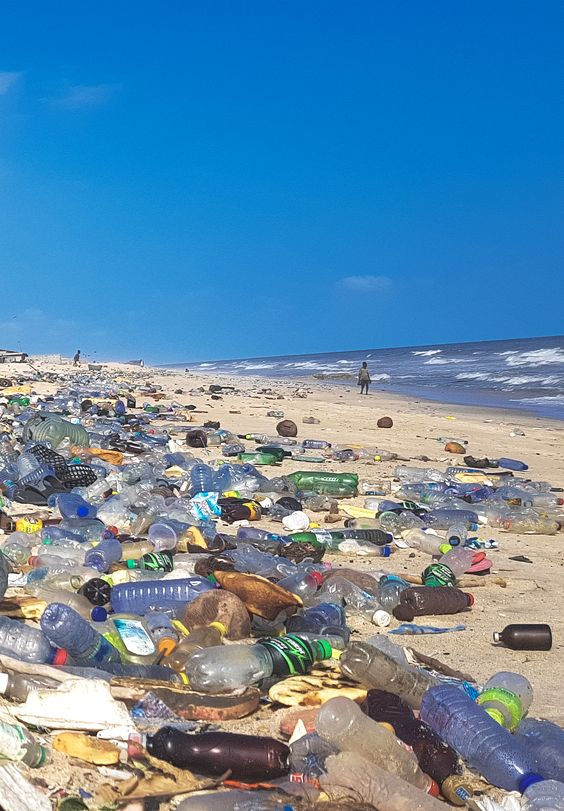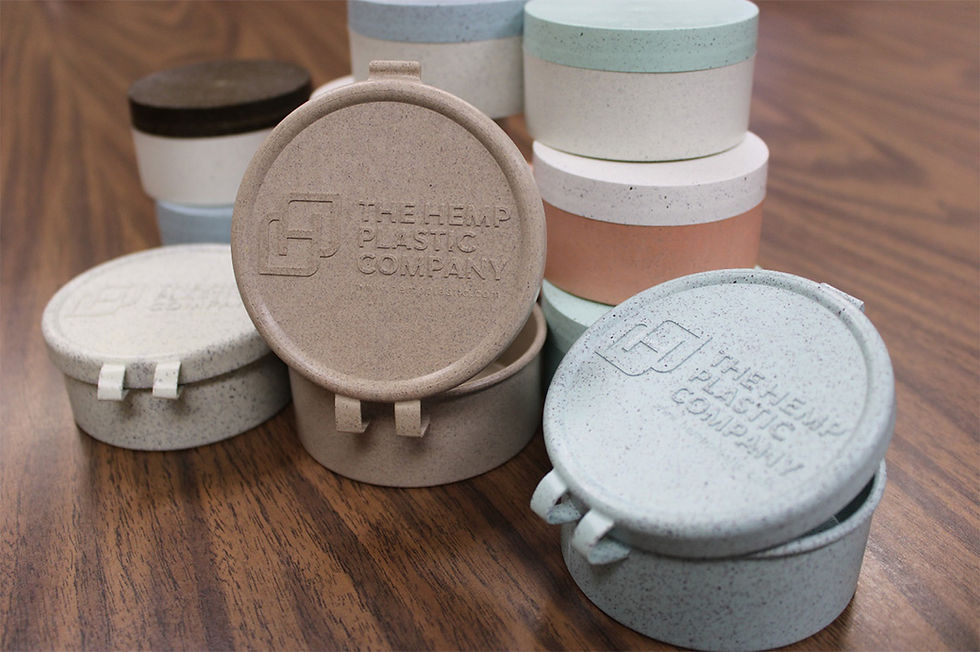#4 SUSTAINABILITY & RECYCLE: SINGLE-USE PACKAGING
- Food & Drinks Tips Team
- Feb 7, 2024
- 6 min read
Another example of how planned obsolescence has become entrenched is by analyzing the packaging of any product. It comes in a box, wrapped in plastic, with another box inside, with Styrofoam, more plastic, a manual, and a seal. Not to mention the product itself. This is another part of the story of stuff that doesn't make sense in today's industry.

Single-use packaging refers to packaging materials that are designed for one-time or limited use before being discarded. These packages are typically used to contain products for sale or distribution and are intended to be disposed of after a single use. Examples of single-use packaging include plastic bottles, aluminum cans, disposable coffee cups, plastic bags, styrofoam containers, and individual wrappers for snacks and other food items.

Single-use packaging is often made from materials such as plastic and styrofoam, which are lightweight, inexpensive to produce, and convenient for consumers. However, the widespread use of single-use packaging has significant environmental consequences, as it contributes to pollution, waste generation, and resource depletion. Single-use packaging is a major contributor to the global plastic pollution crisis, with millions of tons of plastic waste entering landfills, waterways, and oceans each year, posing serious threats to wildlife and ecosystems. The ocean is the destination for the majority of single-use plastic.
Efforts to reduce the environmental impact of single-use packaging include promoting reusable alternatives, implementing bans or restrictions on certain types of single-use plastics, improving recycling infrastructure, and encouraging consumers to make more sustainable choices. By reducing our reliance on single-use packaging and adopting more environmentally friendly alternatives, we can help mitigate the negative impacts of packaging waste on the planet.
The lack of responsibility of industries in distributing single-use packaging is linked to profit-seeking and a lack of consideration for the environmental impacts of their products. Many companies opt for disposable packaging due to its convenience and low production cost, without taking into account the environmental costs associated with the production, use, and disposal of these packaging materials.
Furthermore, inadequate regulation and enforcement also contribute to the problem, allowing companies to distribute single-use packaging without considering the environmental impacts or seeking more sustainable alternatives.
To address this issue, it is crucial for industries to take greater responsibility for the products they manufacture and distribute. This includes investing in more sustainable and recyclable packaging, reducing the use of unnecessary packaging, and seeking innovative solutions to minimize waste and pollution associated with single-use packaging.
Additionally, government policies and public awareness initiatives can play a crucial role in encouraging industries to adopt more responsible and sustainable practices regarding packaging.
WHAT'S WRONG WITH PLASTIC?

The numbers for plastic consumption and recycling can vary according to different sources and regions of the world. However, globally, it is estimated that over 380 million tons of plastic are produced annually, with only a little fraction of that amount being recycled. The plastic recycling rate varies significantly among countries but is generally low, with a large amount of plastics ending up in landfills, incinerators, or the environment. It is important to increase efforts to reduce plastic consumption, promote recycling, and develop more sustainable alternatives for handling plastic waste.
"A Plastic Ocean" is a documentary directed by Craig Leeson and released in 2016, that reveals the devastating impacts of plastic pollution in the oceans, exploring how plastic affects marine life, ocean ecosystems, and even human health. Through stunning visuals and expert interviews, the film highlights the urgency of addressing this global issue and promoting solutions to reduce plastic use and prevent its entry into the oceans. Another super documentary recommendation.
3 SOLUTIONS FOR PACKAGING
There are many alternatives to plastic that can help reduce plastic consumption and its impact on the environment.

I Sugarcane packaging, also known as bagasse packaging, is an eco-friendly alternative to traditional plastic packaging. Bagasse is the fibrous residue left behind after sugarcane stalks are crushed to extract the juice. Here are some key points about sugarcane packaging:
Biodegradable and Compostable: Bagasse packaging is biodegradable, meaning it breaks down naturally over time, and compostable, meaning it can be turned into nutrient-rich compost under the right conditions. This makes it a sustainable alternative to plastic packaging, which can take hundreds of years to decompose.
Renewable Resource: Sugarcane is a rapidly renewable resource, with sugarcane plants typically reaching maturity within 12 to 18 months. This makes bagasse packaging a more sustainable option compared to packaging materials derived from finite fossil fuels.
Versatile: Bagasse can be molded into a variety of shapes and forms, making it suitable for a wide range of packaging applications. It can be used to make food containers, plates, bowls, cups, trays, and more.
Durable: Bagasse packaging is sturdy and can withstand hot and cold temperatures, making it suitable for both hot and cold food and beverages.
Microwave and Freezer Safe: Bagasse packaging is microwave and freezer safe, offering convenience for reheating and storing food.
Reduces Waste: Utilizing sugarcane packaging helps divert agricultural waste from landfills and reduces the demand for traditional plastics, thereby reducing environmental pollution.
Certifications: Look for bagasse packaging that is certified compostable by recognized standards such as ASTM D6400 or EN 13432 to ensure its environmental credentials.
Overall, sugarcane packaging offers a sustainable and environmentally friendly alternative to traditional plastic packaging, contributing to efforts to reduce plastic waste and promote a circular economy.

II Hemp packaging is another eco-friendly alternative to traditional plastic packaging. Hemp, also known as industrial hemp, is a variety of the Cannabis sativa plant species that is grown specifically for industrial uses. Here's a look at some key aspects of hemp packaging:
Biodegradable: Hemp packaging is biodegradable, meaning it can break down naturally over time without leaving harmful residues in the environment. This makes it a sustainable option compared to traditional plastic packaging, which can persist in the environment for hundreds of years.
Renewable Resource: Hemp is a fast-growing crop that requires minimal water, pesticides, and herbicides to cultivate. It can be harvested within a few months and does not deplete soil nutrients, making it a highly renewable and sustainable resource.
Versatile: Hemp fibers can be used to produce a wide range of packaging materials, including paper, cardboard, bioplastics, and textile-based packaging solutions. These materials can be molded or formed into various shapes and sizes to suit different packaging needs.
Durable and Lightweight: Hemp packaging is known for its strength and durability, making it suitable for protecting goods during transportation and storage. Despite its robustness, hemp packaging is lightweight, which can help reduce shipping costs and carbon emissions.
Low Environmental Impact: Hemp cultivation requires fewer inputs compared to other crops, such as cotton or wood pulp, and it has a lower carbon footprint. Additionally, hemp plants have deep root systems that help prevent soil erosion and improve soil health.
Recyclable and Reusable: Hemp packaging materials can often be recycled or reused, further extending their lifecycle and reducing waste.
Legal Considerations: While hemp is derived from the cannabis, it contains negligible amounts of THC (the psychoactive compound) and is legal to cultivate in many countries for industrial purposes.
Overall, hemp packaging offers a sustainable and environmentally friendly alternative to traditional plastic packaging, contributing to efforts to reduce plastic waste and promote a circular economy.

III Biodegradable plastics are a type of plastic that can break down naturally in the environment through the action of microorganisms such as bacteria, fungi, and algae. Unlike traditional plastics, which can persist in the environment for hundreds of years without degrading, biodegradable plastics undergo decomposition into simpler compounds over time. Here are some key points about biodegradable plastics:
Materials: Biodegradable plastics can be made from a variety of renewable resources such as corn starch, sugarcane, potato starch, cellulose, and algae. They can also be synthesized from petrochemicals, but with additives that facilitate biodegradation.
Degradation Process: Biodegradable plastics degrade through a process called biodegradation, which involves the breakdown of the polymer chains by microorganisms. This process can occur in various environments, including soil, compost, water, and marine environments.
Environmental Benefits: Biodegradable plastics offer several environmental benefits compared to traditional plastics. They reduce the accumulation of plastic waste in landfills and oceans, minimize the release of harmful chemicals into the environment during degradation, and contribute to the conservation of finite resources.
Types: There are two main types of biodegradable plastics: bioplastic and oxo-biodegradable plastic. Bioplastics are derived from renewable resources and undergo enzymatic or microbial degradation. Oxo-biodegradable plastics contain additives that accelerate degradation when exposed to heat, light, or mechanical stress.
Limitations: While biodegradable plastics offer environmental advantages, they also have limitations. The rate and extent of biodegradation depend on various factors such as temperature, moisture, oxygen availability, and microbial activity. In some cases, biodegradable plastics may require specific conditions, such as industrial composting facilities, to degrade efficiently.
Certification: To ensure the environmental performance and biodegradability of biodegradable plastics, certification standards such as ASTM D6400 (for compostable plastics) and EN 13432 (for packaging recoverable through composting and biodegradation) have been established.
Applications: Biodegradable plastics are used in various applications, including packaging (e.g., food packaging, shopping bags), agriculture (e.g., mulch film, plant pots), disposable products (e.g., cutlery, straws), and biomedical devices (e.g., sutures, implants).
Overall, biodegradable plastics offer a promising solution to mitigate the environmental impact of plastic pollution, although continued research and development are needed to improve their performance, scalability, and end-of-life management.
Comments